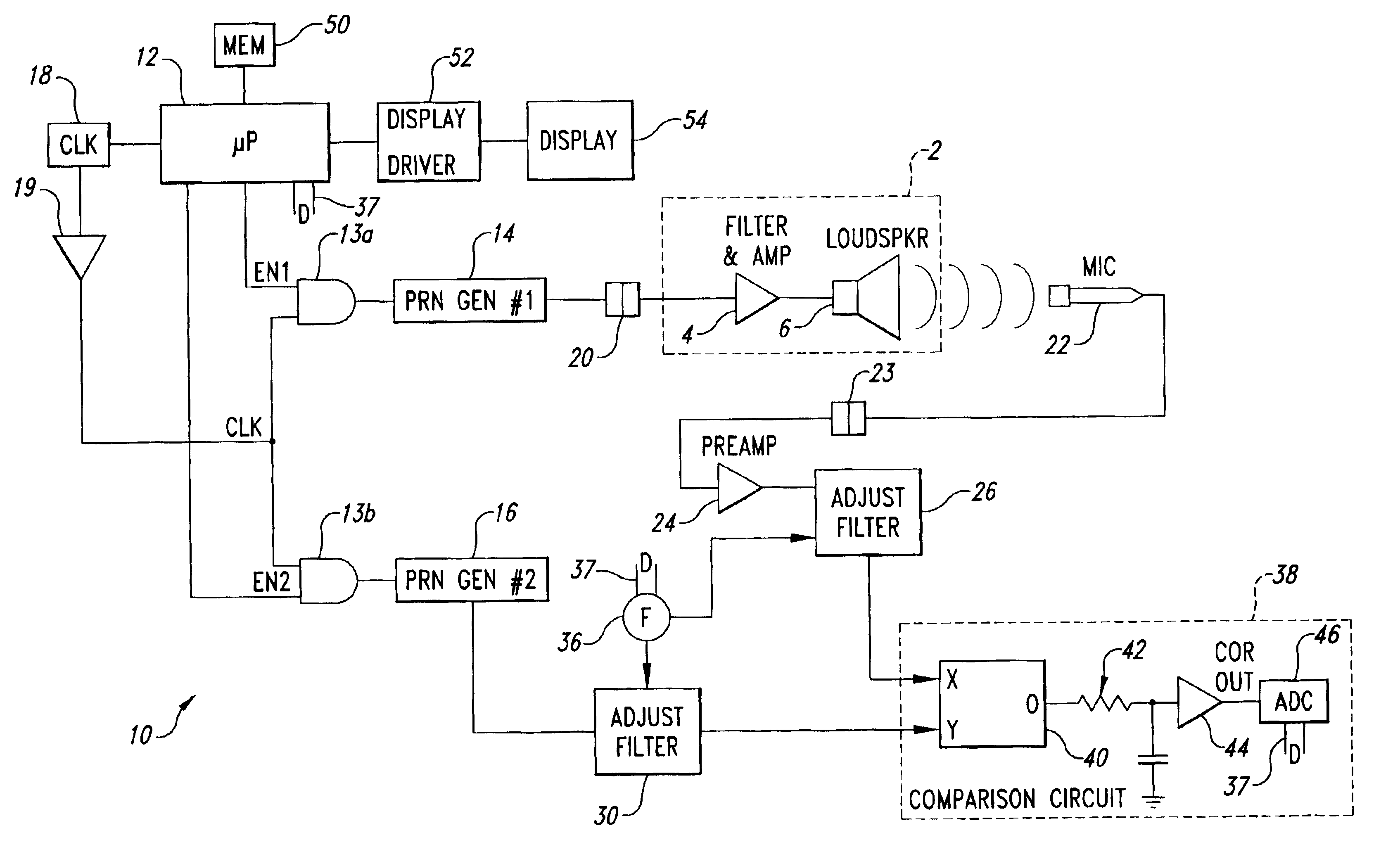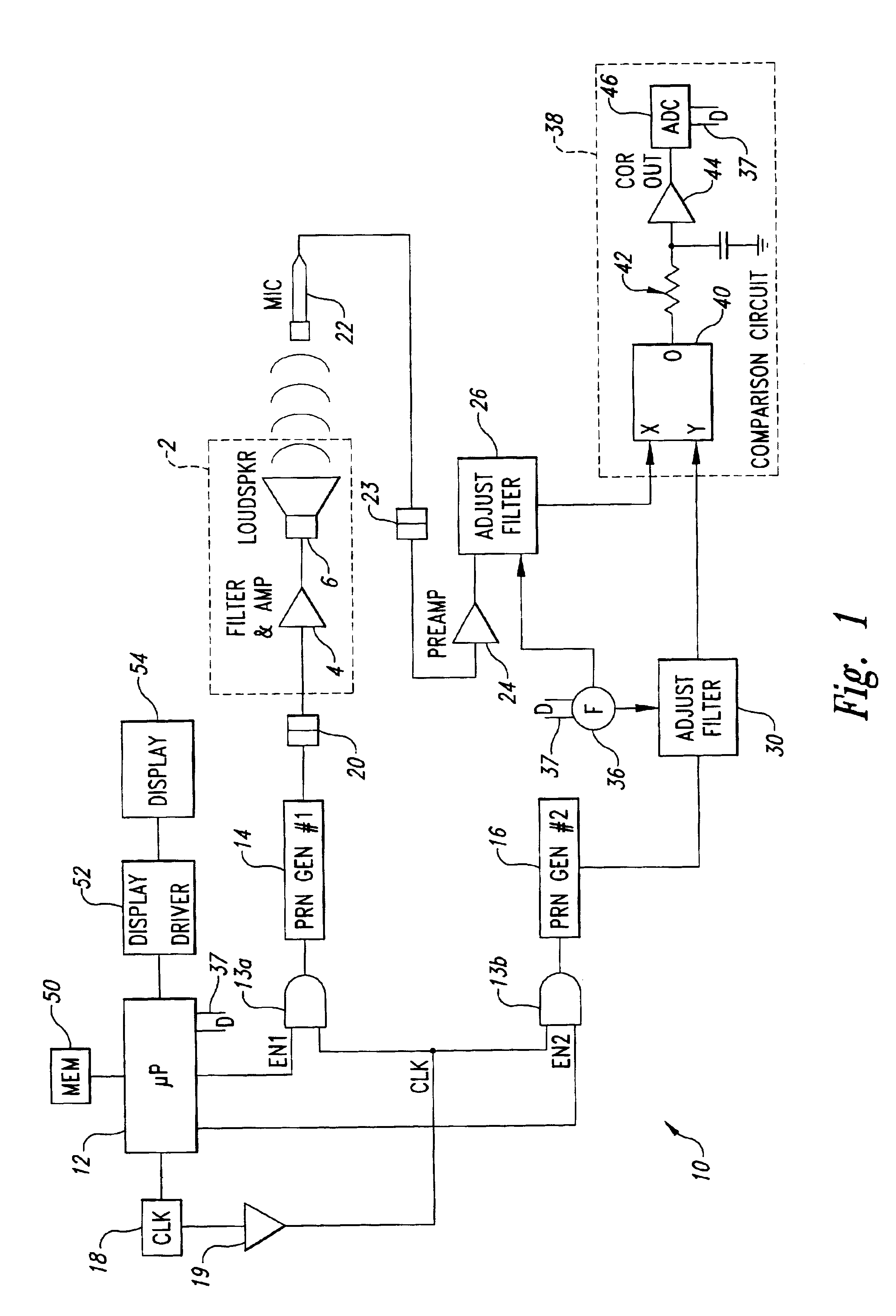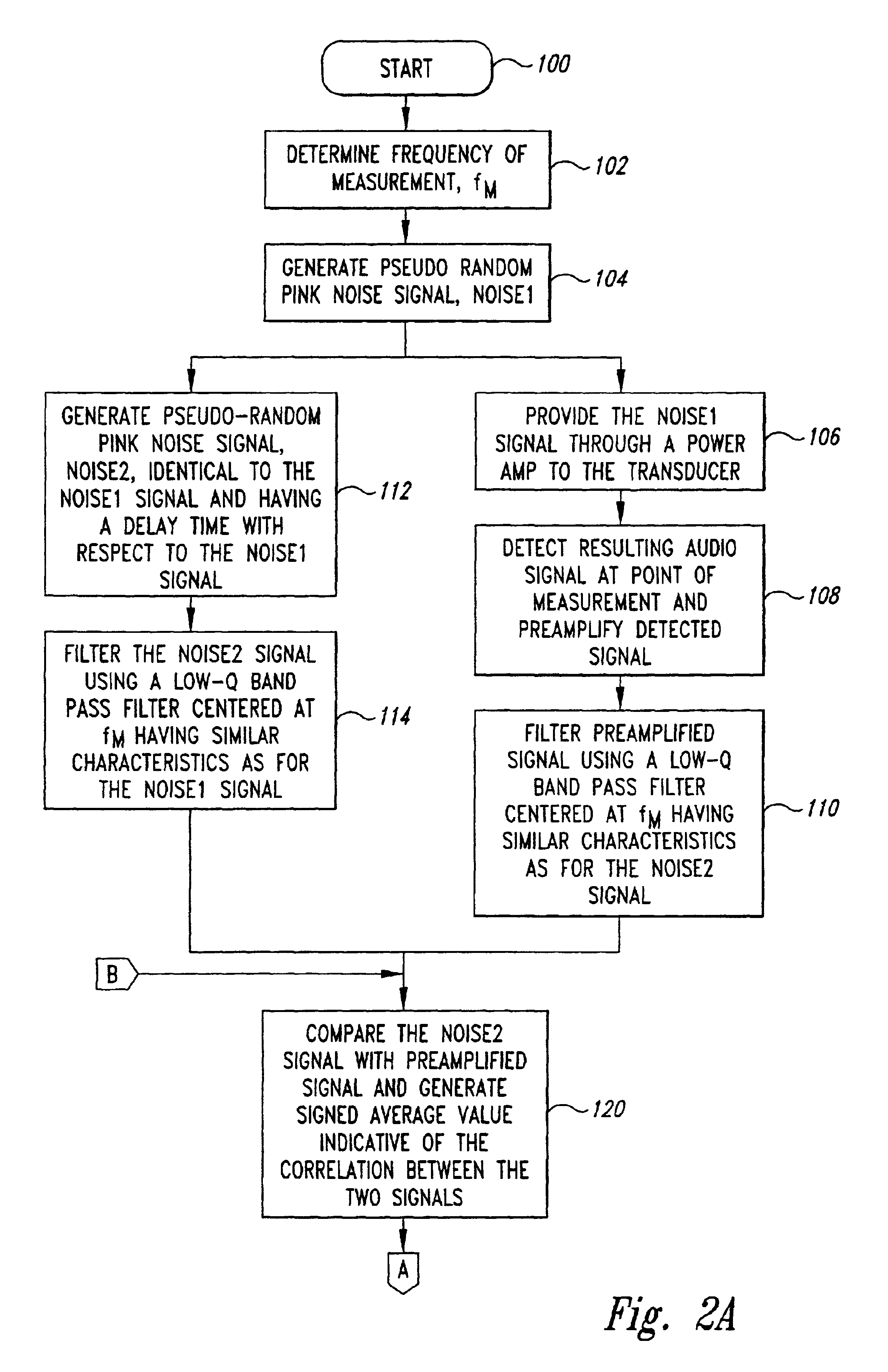Apparatus and method for analyzing an electro-acoustic system
an electro-acoustic system and apparatus technology, applied in the direction of electrical apparatus, stereophonic arrangments, loudspeaker spatial/constructional arrangements, etc., can solve the problems of a single loudspeaker not being able to accurately reproduce sound over the entire frequency rang
- Summary
- Abstract
- Description
- Claims
- Application Information
AI Technical Summary
Problems solved by technology
Method used
Image
Examples
Embodiment Construction
[0014]Shown in FIG. 1 is an analysis system 10 according to an embodiment of the present invention. The analysis system 10 is coupled to a conventional electro-acoustic system 2, having a power amplifier 4 and an electro-acoustic transducer 6, such as an audio loudspeaker. The analysis system 10 measures the delay time for a stimulus signal applied to the electro-acoustic system 2 to be detected at a measurement point. The delay time is in turn used by the analysis system 10 to calculate the distance between the transducer 6 and the measurement point for a particular measurement frequency. The analysis system 10 may be programmed to automatically perform the measurement, or the measurement may be manually performed by an operator.
[0015]Various signals may be used for the stimulus signal. Generally, the stimulus signal should have unique characteristics so that a delay time may be determined from correlating the audio signal generated in response to the stimulus signal with a delayed...
PUM
 Login to View More
Login to View More Abstract
Description
Claims
Application Information
 Login to View More
Login to View More - R&D
- Intellectual Property
- Life Sciences
- Materials
- Tech Scout
- Unparalleled Data Quality
- Higher Quality Content
- 60% Fewer Hallucinations
Browse by: Latest US Patents, China's latest patents, Technical Efficacy Thesaurus, Application Domain, Technology Topic, Popular Technical Reports.
© 2025 PatSnap. All rights reserved.Legal|Privacy policy|Modern Slavery Act Transparency Statement|Sitemap|About US| Contact US: help@patsnap.com



